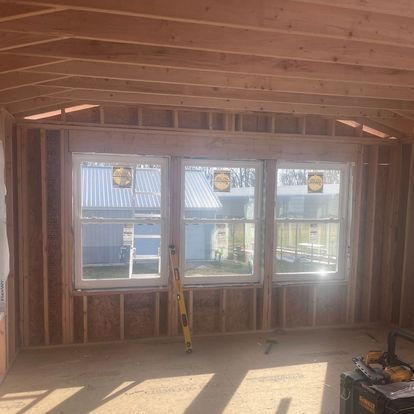How to Plan the Perfect Home Addition: A Homeowner’s Guide to Choosing the Right Type & Building a Solid Plan
- davisrenosde
- 3 days ago
- 3 min read

If you’ve been dreaming of more space, whether it’s a bigger kitchen, an extra bedroom, or a full second story, adding an addition to your home can be one of the most rewarding investments you’ll ever make. But it’s also one of the most complex. Understanding what type of addition is best for your home, how the planning process works, and what decisions need to be made early can make the journey smoother and the final result far more satisfying. Here’s a clear guide to help you get started.
1. Identify the Problem You’re Trying to Solve
Before you think about square footage, rooflines, or layouts, start by defining why you want an addition.
Ask yourself:
Do you need more functional living space (e.g., family room, primary suite)?
Do you need more usable square footage for storage, guests, or hobbies?
Is your current home layout limiting (small kitchen, no dining room flow, not enough bathrooms)?
Are you trying to increase resale value or long-term comfort?
Understanding the “why” behind your addition helps determine the “what.”
2. Explore the Different Types of Home Additions

There’s no one-size-fits-all solution. The right addition depends on your goals, your property, your home’s structure, and your budget.
Bump-Out Addition
Best for: Expanding existing rooms (kitchen, bathroom, bedroom).
Why choose this: It’s cost-effective and doesn’t require major foundation work.
Good if: You need just a little more space to make an existing room functional.
Full Room Addition
Best for: Adding a bedroom, bathroom, sunroom, or family room.
Why choose this: Offers significant new space without altering your entire home.
Good if: Your lot has room to expand outward.
Second-Story or Multi-Story Addition
Best for: Growing families, building a primary suite, or adding multiple bedrooms.
Why choose this: Maximizes square footage without expanding the footprint.
Good if: Building outward isn’t possible or you want to dramatically increase space.
Garage or Above-Garage Addition
Best for: Offices, guest suites, or bonus rooms.
Why choose this: It uses existing structure and footprint.
Good if: You need functional but slightly separate living space.
ADUs (Accessory Dwelling Units)
Best for: Rental income, multigenerational living, or guest accommodations.
Why choose this: Adds value and flexibility to your property.
Good if: Your city allows ADUs and your lot can support one.
3. Evaluate Your Home’s Structure, Lot, and Layout
Once you know what kind of space you need, the next step is determining what your home can support. This is where a professional remodeler’s expertise is essential.
A remodeler will look at:
Lot size and setbacks (to determine whether you can build outward)
Foundation strength (for second-story additions)
Rooflines and structural load paths
Mechanical systems (HVAC, electrical, plumbing)
Access to utilities
Home style and architectural compatibility
These factors help determine which type of addition is realistic and cost-effective.
4. Create a Clear Vision and a Realistic Budget
This is where homeowners often feel overwhelmed, but a good contractor will guide you through it.
Define Your Priorities
Consider:
Must-haves vs. nice-to-haves
How the addition should connect to your existing home
Whether you want open-concept or defined rooms
How the space will be used daily
Estimate Costs Early
Your remodeler can help you understand:
Construction costs
Architectural and engineering fees
Permit and inspection fees
Utility upgrades
Finishes and materials
Contingency budgets
Knowing your priorities helps you stay on budget without sacrificing what matters most.
5. Understand the Home Addition Process

Every addition project goes through several phases. Here’s what you can expect:
1. Initial Consultation
You meet with your remodeler to discuss goals, needs, and ideas.
2. Site Evaluation & Feasibility
The team inspects your home’s structure and property to confirm what’s possible.
3. Concept & Design Development
Architects and designers create layout options, renderings, and preliminary drawings.
4. Final Plans & Permits
Engineering plans are completed, and the remodeler submits everything to your local building department.
5. Construction
This phase includes demolition, foundation work, framing, electrical, plumbing, HVAC, drywall, and finishing.
6. Final Walkthrough & Completion
Your remodeler ensures everything is up to code and meets your expectations.
6. Choose the Right Remodeling Partner
The right contractor is the difference between a smooth project and a stressful one.
Look for a company that:
Has experience with additions, not just cosmetic remodeling
Handles design and permitting
Provides transparent timelines and costs
Communicates clearly and frequently
Has solid references and a proven track record
A home addition is a major investment, and you deserve a team that puts your home and peace of mind first.
Final Thoughts
Adding an addition to your home should be exciting, not overwhelming. By understanding your needs, exploring the right type of addition, and following a solid planning process, you’ll end up with a space that truly enhances your life and adds long-term value to your property.





Comments